Best Bottles for Newborns

Sarah Johnson, MD
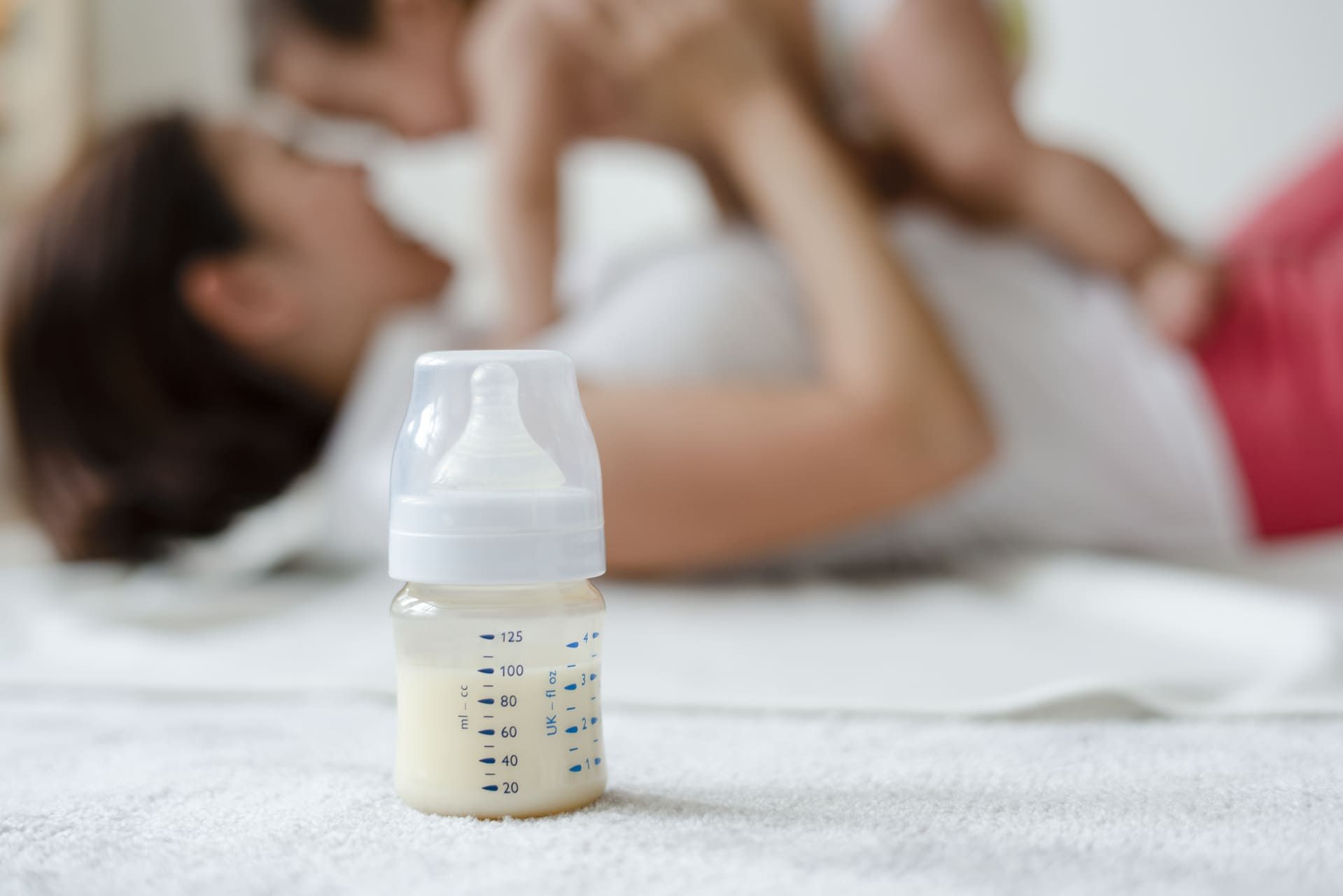
Feeding your baby is one of the most precious times you will have as a parent, whether you choose to use a bottle to give your infant formula or pumped milk.
However, selecting a bottle is difficult. There are countless alternatives. Which bottle is best for babies? Glass, plastic, or silicone—which do you prefer? How many bottles do you really need, and what size should you put on your registry? Is a sterilizer and bottle warmer really necessary?
If you're also thinking about soothing tools during feeding routines, exploring the best newborn-friendly pacifiers for breastfed babies can help keep things consistent and gentle.
The questions seem never-ending, but if you're thinking about bottle feeding, thinking about moving from breast milk to formula, or you just want to be ready, we have the answers. We're dissecting everything related to bottles and revealing the top recommendations from professionals and parents.
IN THIS ARTICLE
Top Picks for the Best Baby Bottles
Best Bottle for Breastfed Baby
Best Baby Bottle That's Easy to Clean
Best Baby Bottle for Pumping Parents
Best Baby Bottle for Breastmilk and Formula
When to replace baby bottle nipples
Weaning your child from a baby bottle
Methods for bottle feeding a baby
Self-feeding with a baby bottle
How many baby bottles do I need?
What are the best baby bottles?
How long can you keep using a baby bottle? Do they expire?
Top Picks for the Best Baby Bottles
Best Baby Bottle for Gas
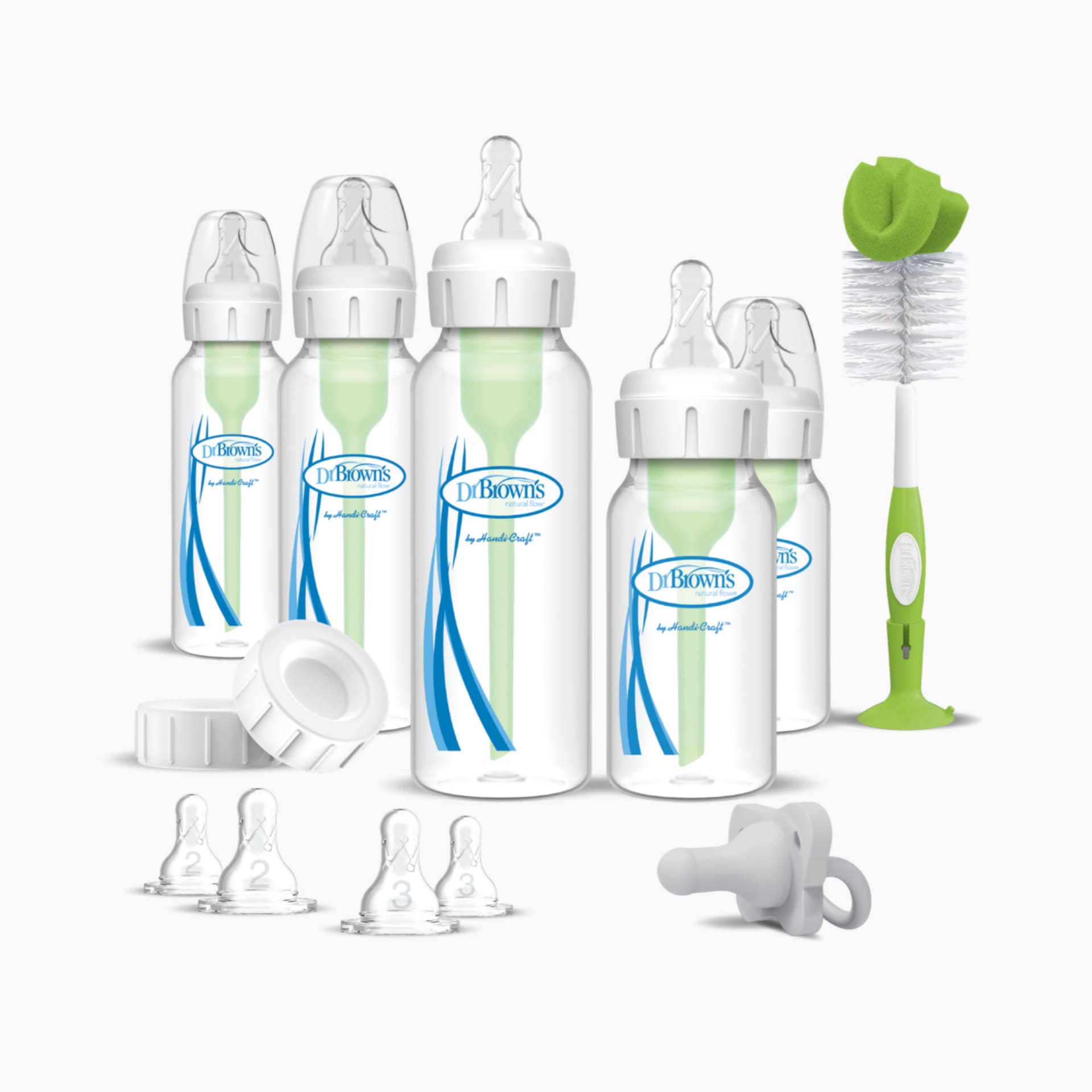
DR. BROWN'S - Options+ Newborn Starter Gift Set
Parents on Babylist have a preference for Dr. Brown's bottles. They are well-known for their unique venting technique, which reduces burping, gas, spit-up, and even colic while imitating breastfeeding by avoiding air bubbles. (Hot tip: reducing bubbles can also be achieved by utilizing a formula creator.) The nutrients in milk and formula are also preserved by this vacuum-free action. This well-liked beginning kit comes with a variety of bottles, nipples, caps, and cleaning brushes.
better with Soula
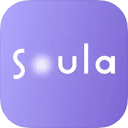
Support for every woman:
✅ A Personalized Plan to reduce anxiety and overthinking
✅ 24/7 Emotional Support whenever you need it Cycle-Aligned Mental Health Tracking — monitor your mood and symptoms in sync with your period
✅ Real-Time Insights into your energy levels and emotional state
✅ Bite-Sized Exercises to help you return to a calm, balanced state — anytime, anywhere
Best Bottle for Breastfed Baby
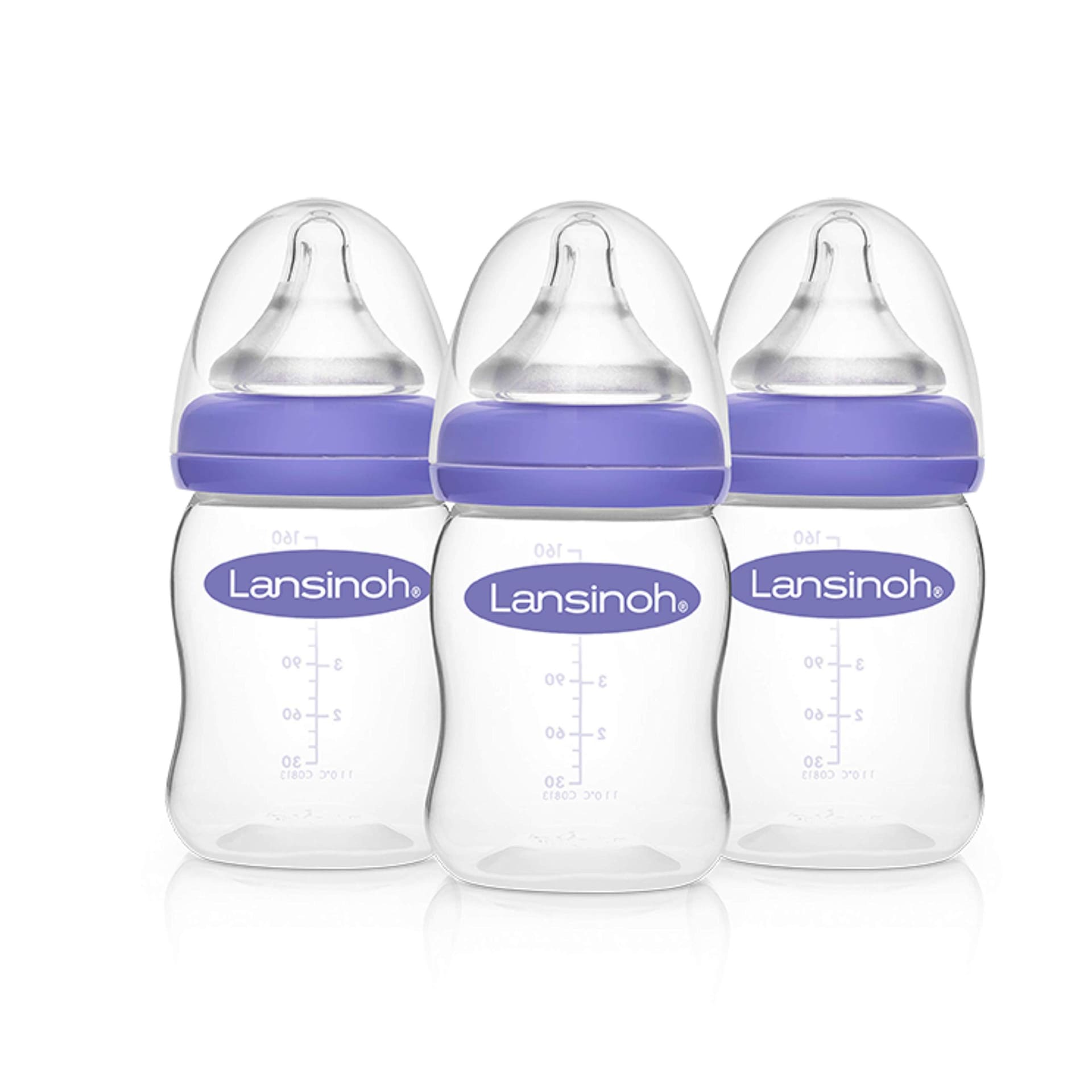
Lansinoh Breastmilk Feeding Bottles
Breastfeeding newborns will recognize the NaturalWave nipple on the Lanisoh bottle because it is composed of soft, flexible silicone and has a realistic conical form with a wide base. In order to aid babies in achieving a tight latch and seal when drinking, it also features a matte surface. According to the manufacturer, this design helps newborns avoid nipple confusion by encouraging them to perform the same motions they would while nursing.
The air ventilation system in the nipple itself helps with colic and other gas issues.
Best Silicone Baby Bottle
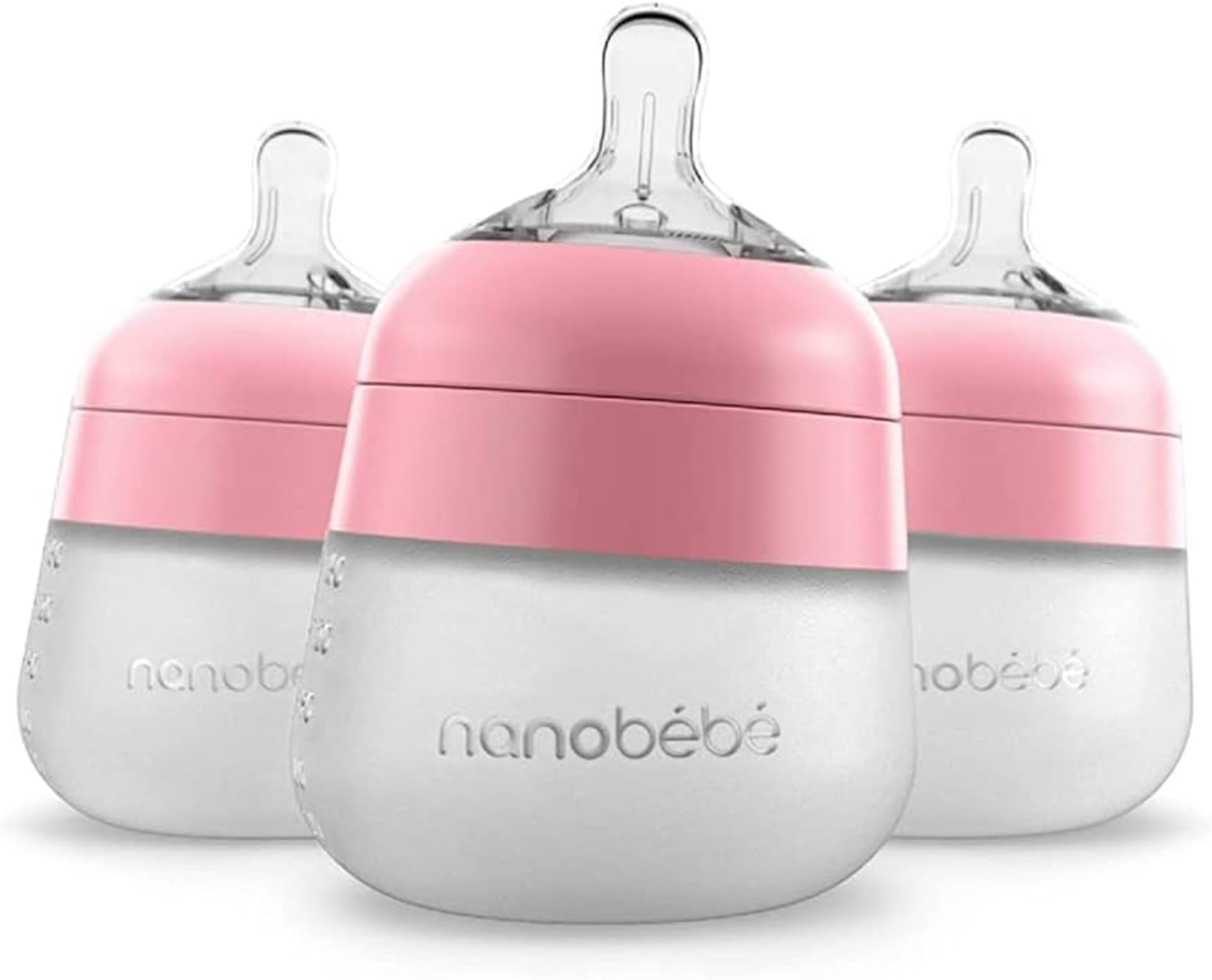
NANOBEBE - Flexy Silicone Baby Bottle
Despite being well-known for its distinctive breastmilk bottle, Babylist users prefer Nanobébé's silicone version, and for good reason. The bottle's texture is soft and squeezable, making it a popular choice among parents and babies. They also value the venting system, which has three built-in vents that can ease gas and discomfort for your baby's tummy. (They also require no additional parts for cleaning because the venting system is integrated right into them.) However, the wide, sturdy base of the bottle is one of its outstanding qualities. It helps the bottle stay in place when you fill it with formula or breast milk, in contrast to some silicone solutions. Additionally, less milk spills are usually a good thing.
Best Value Baby Bottle
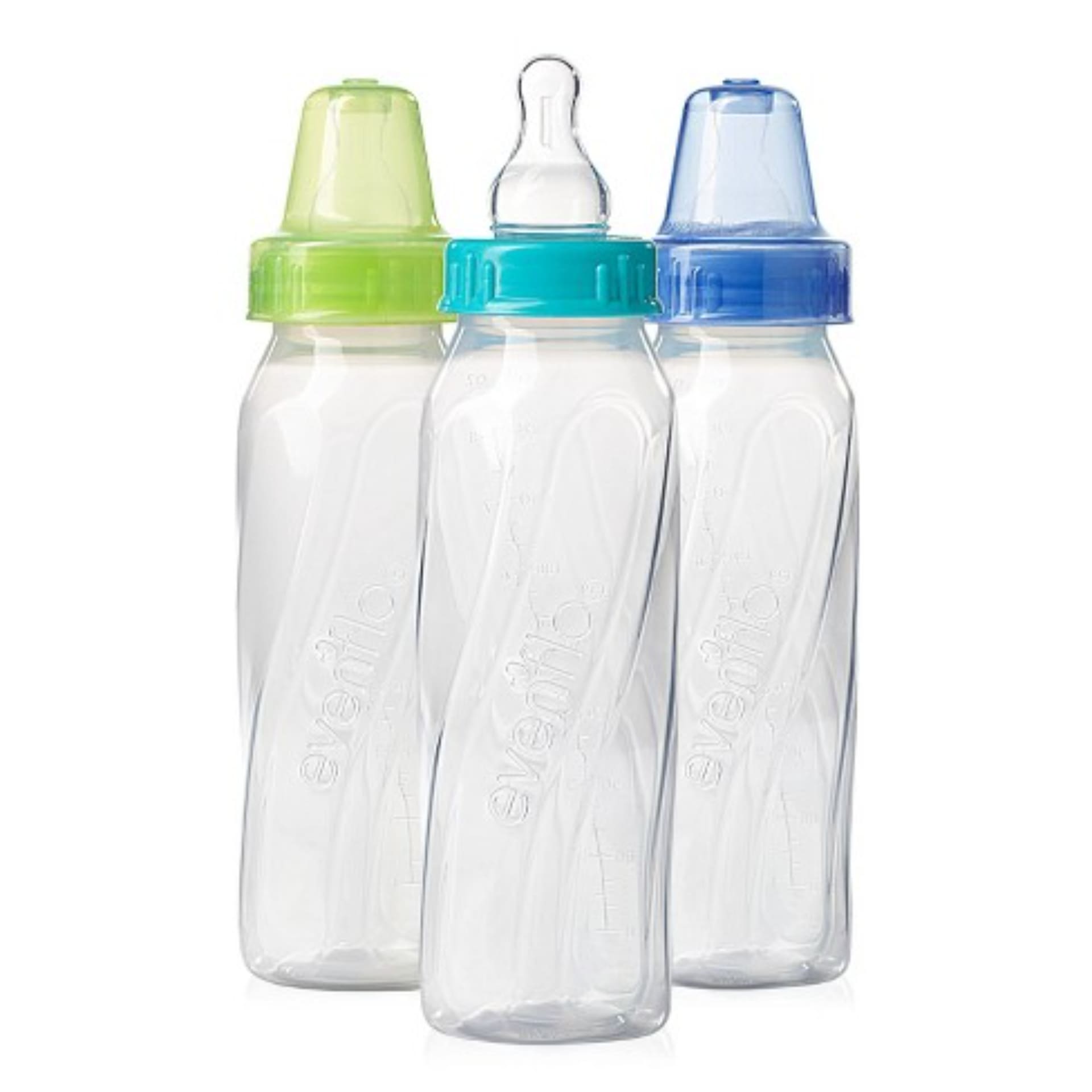
Evenflo Feeding Classic Clear Plastic Baby Bottles
Considering all of their wonderful qualities and the overwhelmingly good parent ratings, these bottles are a superb deal. (15,000+ with 4.6 ratings on Amazon by itself!) Their twisting surface design, low weight, and narrow shape make them comfortable and easy for a newborn to handle. The nipple's slightly sloping shape is another feature that lactation experts find appealing; it might promote a deep latch. With just three parts, they are also incredibly simple to clean.
Best Baby Bottle That's Easy to Clean
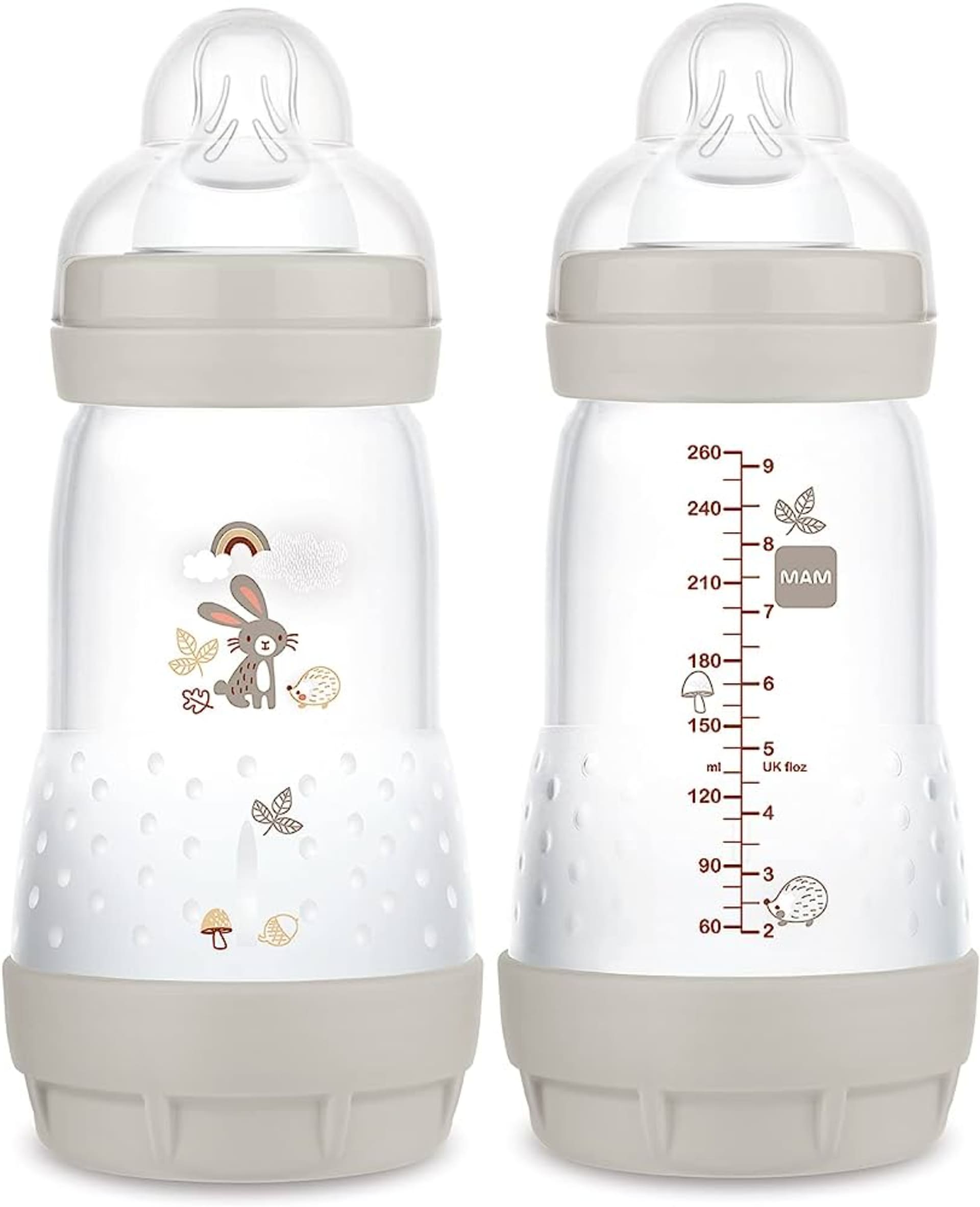
Mam Easy Start Anti-Colic Baby Bottle
Parents have complimented the Mam Easy Start Anti-Colic bottle for being easier to clean than more intricate vented bottles like Dr. Brown's, in addition to being one of the most economical anti-colic bottles available. This is because the Mam features a vented base with a silicone gasket that fits over it, in place of a straw vent. In order to avoid gas, burps, and other colic-related symptoms, this vent removes air bubbles and produces a constant, uniform milk flow. There are no hard-to-reach areas to clean because the base unscrews from the bottom. Moreover, this bottle has a useful trick up its sleeve: it has the ability to self-sterilize. You don't need a bottle sterilizer; all you have to do is put the assembled bottle in the microwave for three minutes after filling its base with water.
The slow-flow nipple on these bottles has a somewhat flat contour and a matte finish where the baby's lips go to make it easier for them to hold and sip at their own pace. Our staff member who is a mom mentioned that she can fasten this bottle to the flanges of her Spectra breast pump. (While it's not the ideal fit, it suits her.) Simple routines like this can make feeding feel more manageable on days when you're dealing with mom stress.
Best Glass Baby Bottle

PHILIPS AVENT - Avent Glass Natural Baby Bottle With Natural Response Nipple
With a broad, flexible nipple, an effective anti-colic system, and few pieces to clean, this popular bottle series has all the features parents love about Avent's plastic bottles, only in glass. By releasing air into the bottle rather than your child's stomach, the twin-valve design lessens colic and discomfort. Additionally, the glass is resistant to thermal shock, so it can easily go from hot to cold. Please be aware that these are heavy, just like other glass bottles, and that there is always a chance they will break if dropped because they are not covered by a silicone sleeve.
Five glass bottles (two eight-ounce and three four-ounce) and two silicone bottle sleeves are included in this package.
Best Baby Bottle for Pumping Parents
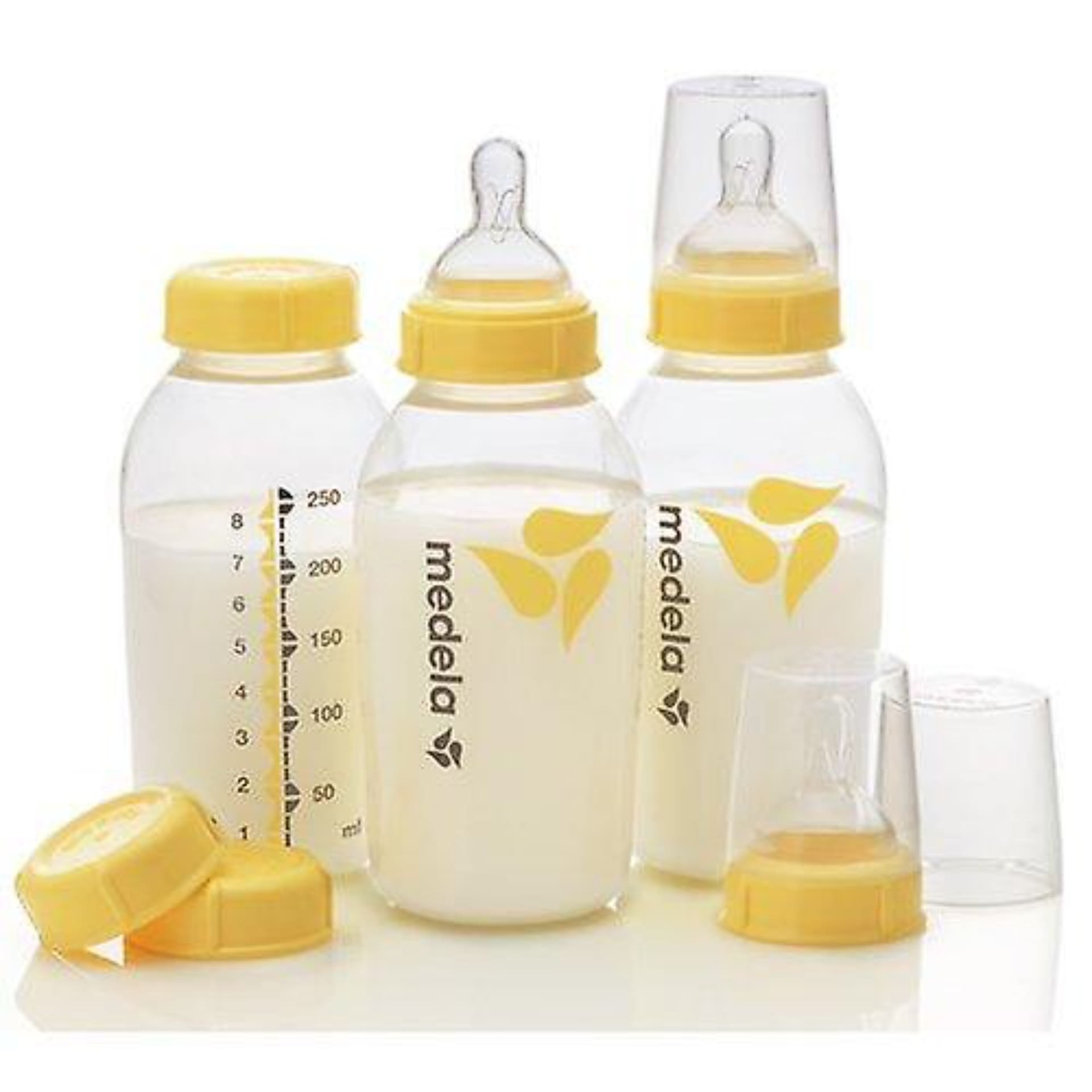
MEDELA - Breastmilk Bottle Set
The bottles from this brand serve three purposes: you can pump straight into them, keep your milk in them, and use them as bottles by screwing on the nipple. Even better, there aren't any internal components to connect or maintain.
Best Collapsible Baby Bottle
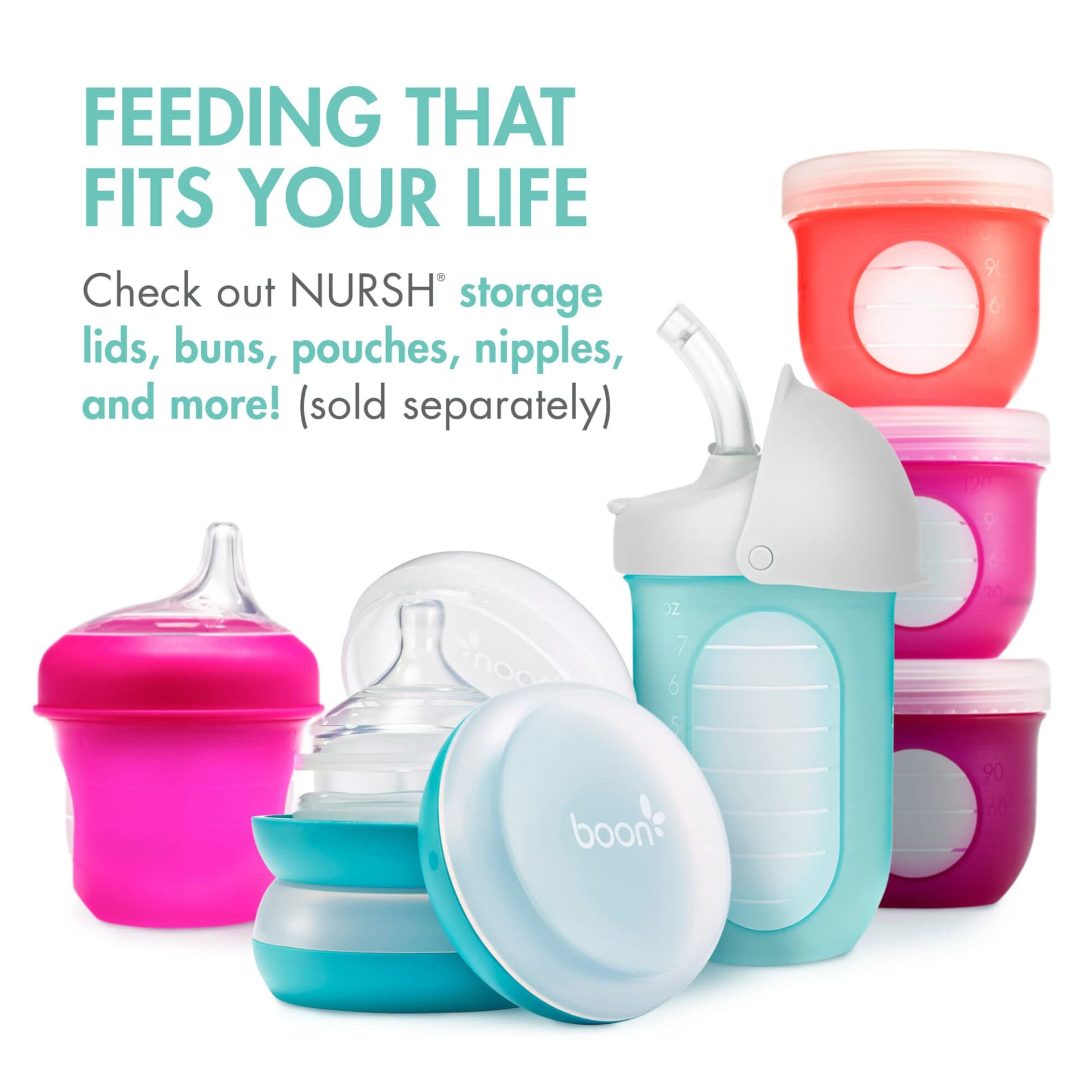
BOON - NURSH Silicone Pouch Bottles
Boon's Nursh bottles use a more straightforward method to achieve a comparable effect than other bottles that use intricate venting systems to reduce air intake. A silicone pouch on Nursh bottles collapses while your infant sips. Less air in the baby's stomach as a result helps lessen gas, colic, and general fussiness. It also implies that cleaning and assembly of these bottles are quite simple.
Best Wide-Neck Baby Bottle
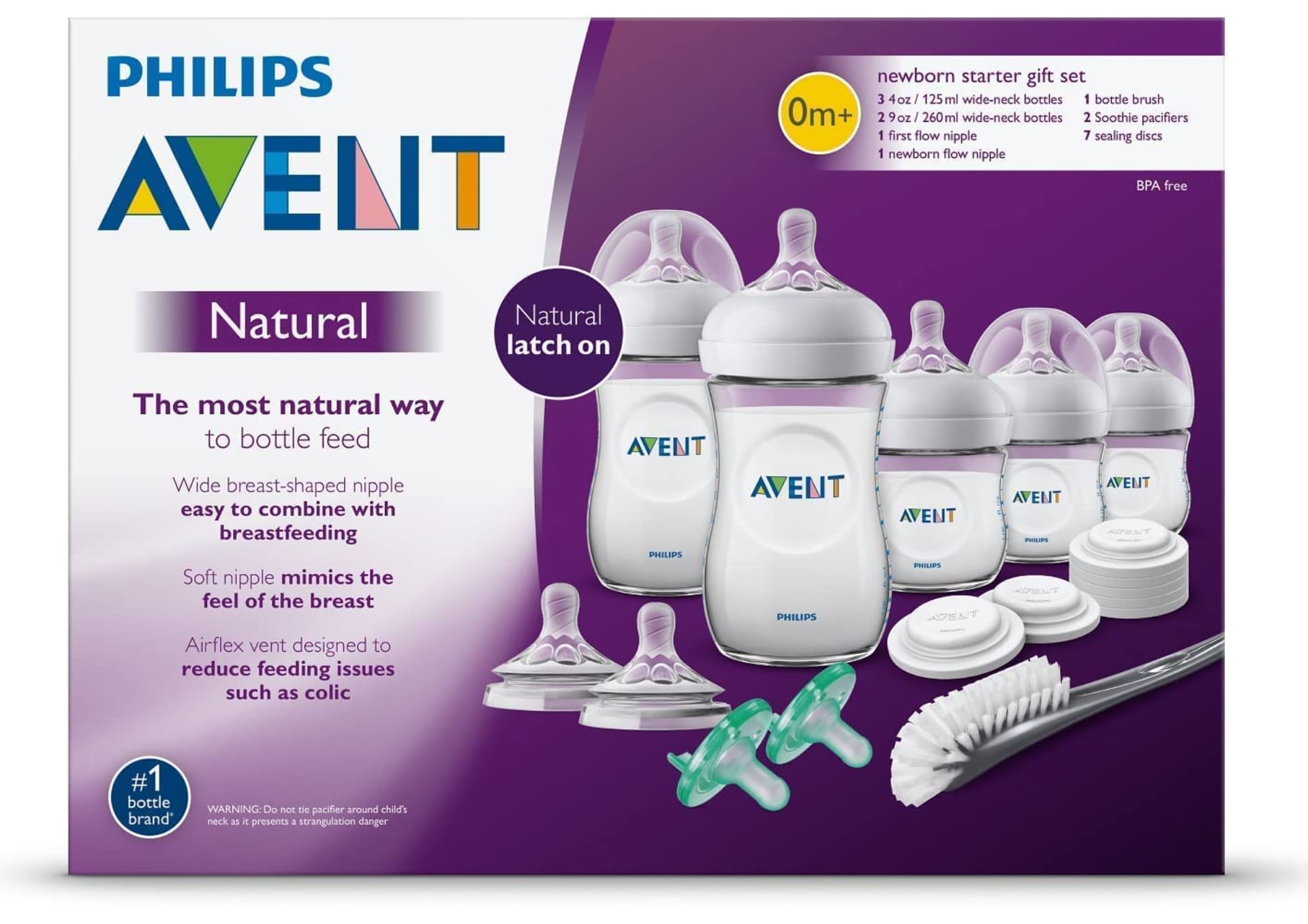
PHILIPS AVENT - Natural Baby Bottle Newborn Starter Gift Set
The petal form of the wide, flexible nipples of Philips Avent Natural bottles helps to encourage a natural latch and keeps the nipples from collapsing. The bottles are perfectly shaped for small hands to handle, and they have an effective anti-colic system with only a few pieces, making them easy to clean. Five bottles, two sets of nipples, two pacifiers, and a bottle brush are included in the starter box.
Best Hybrid Baby Bottle
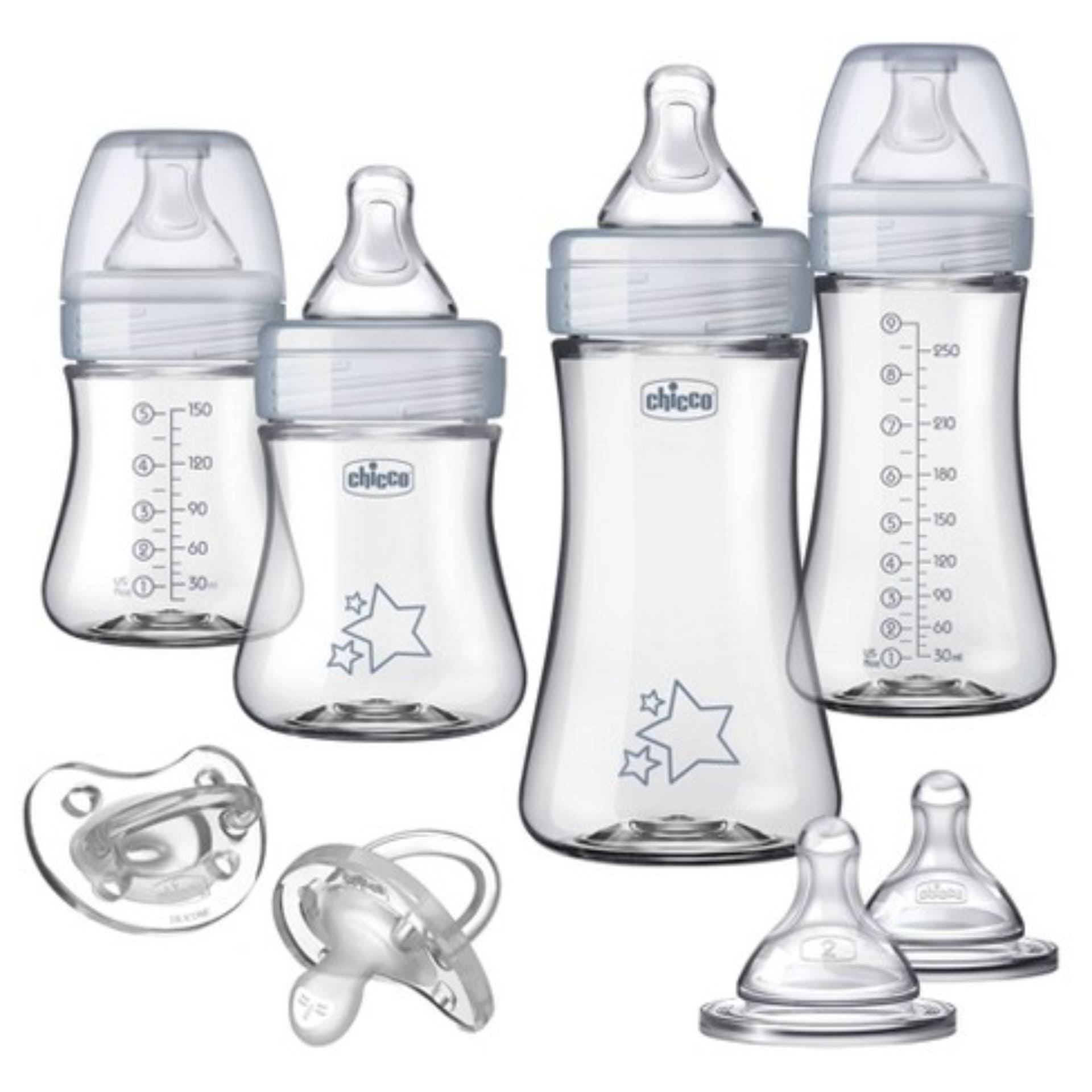
CHICCO - Duo Newborn Hybrid Baby Bottle Starter Gift Set with Invinci-Glass
This unique bottle combines the ease of use of a plastic bottle with the purity of a glass bottle. It's the only surface your baby's milk comes into contact with because the inside is made of glass. In the meantime, the bottle's exterior is made of lightweight, break-resistant plastic. Additionally, everything is safe to use in the dishwasher, bottle warmer, and sterilizer (if you're in need of one, check out our list of the top bottle sterilizers).
Best Baby Bottle for Breastmilk and Formula
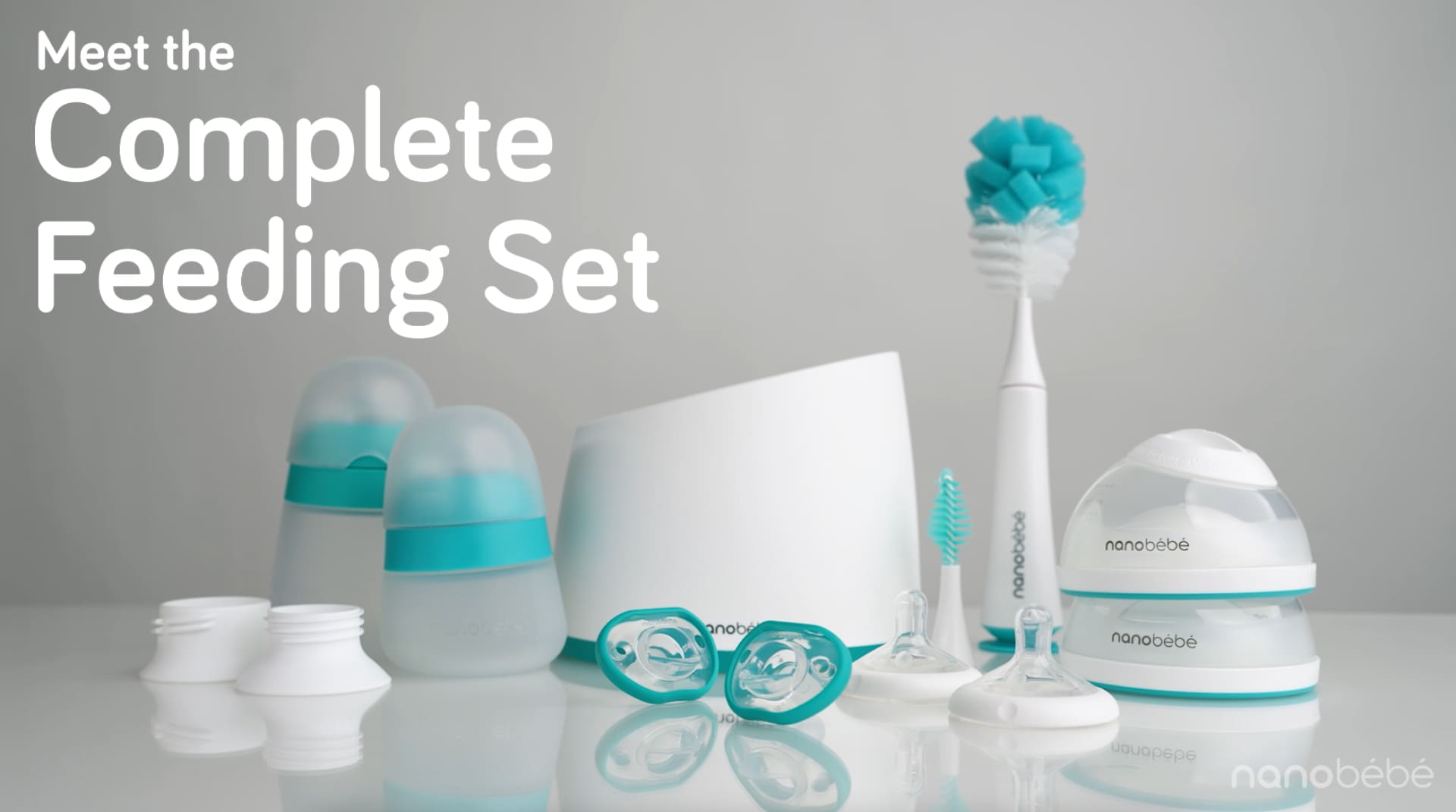
NANOBEBE - Baby Bottle Complete Feeding Set
This one-stop shop includes two varieties of bottles that are ideal for formula and breastmilk.
The innovative breastfeeding bottles, shaped like a breast, are the ideal balance of form and function. The distinctive concave form distributes the milk into a thin layer, facilitating rapid and even heating and shielding the nutrients from oxidation. They even stack one on top of the other for effective storage, and you may pump straight into the bottle.
Would you also want to try a more conventional bottle? With just a few pieces and a triple-vented, anti-colic, non-collapsible nipple, this ultra-soft bottle is simple to clean. As your infant gets older, it works excellent with formula as well as milk and water.
Best Slow Flow Baby Bottle
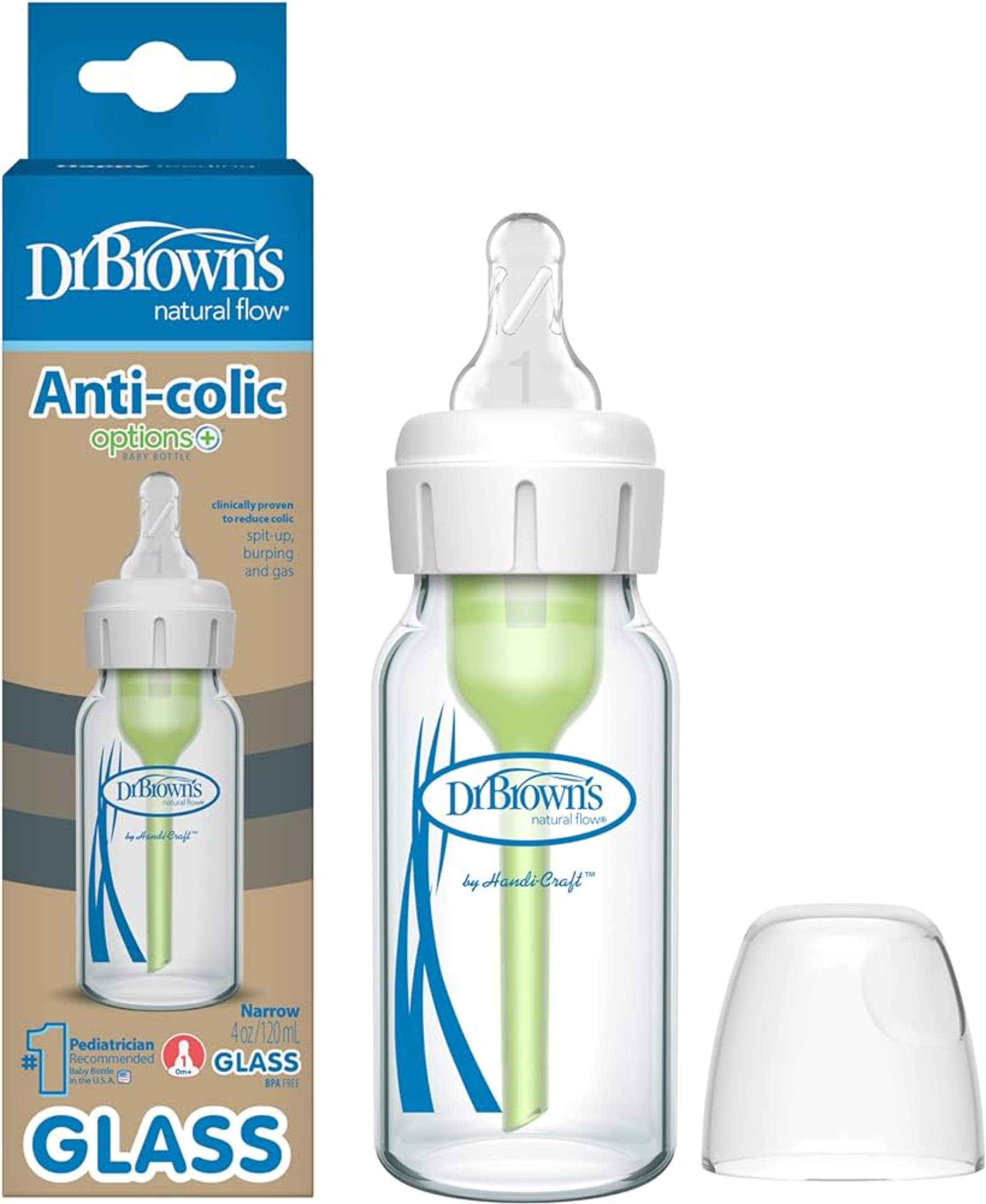
Dr. Brown’s Anti-Colic Options+ Narrow Glass Bottle
The Dr. Brown's Anti-Colic Options+ bottle is a tried-and-true favorite here at Parents, having won our Best for Baby Awards for several years running. It also frequently showed up in our staff survey. The bottle's vent system diverts air that may otherwise result in uncomfortable burping, spitting, and gas. You can take out the funnel-shaped vent and continue feeding your baby from the same bottle once they outgrow colic. Additionally, it has a slow-flow nipple that mimics the actual thing's form so your baby can feed themselves at their own leisure.
Baby Bottle Gift Set
HEGEN - Bottle Starter Gift Set
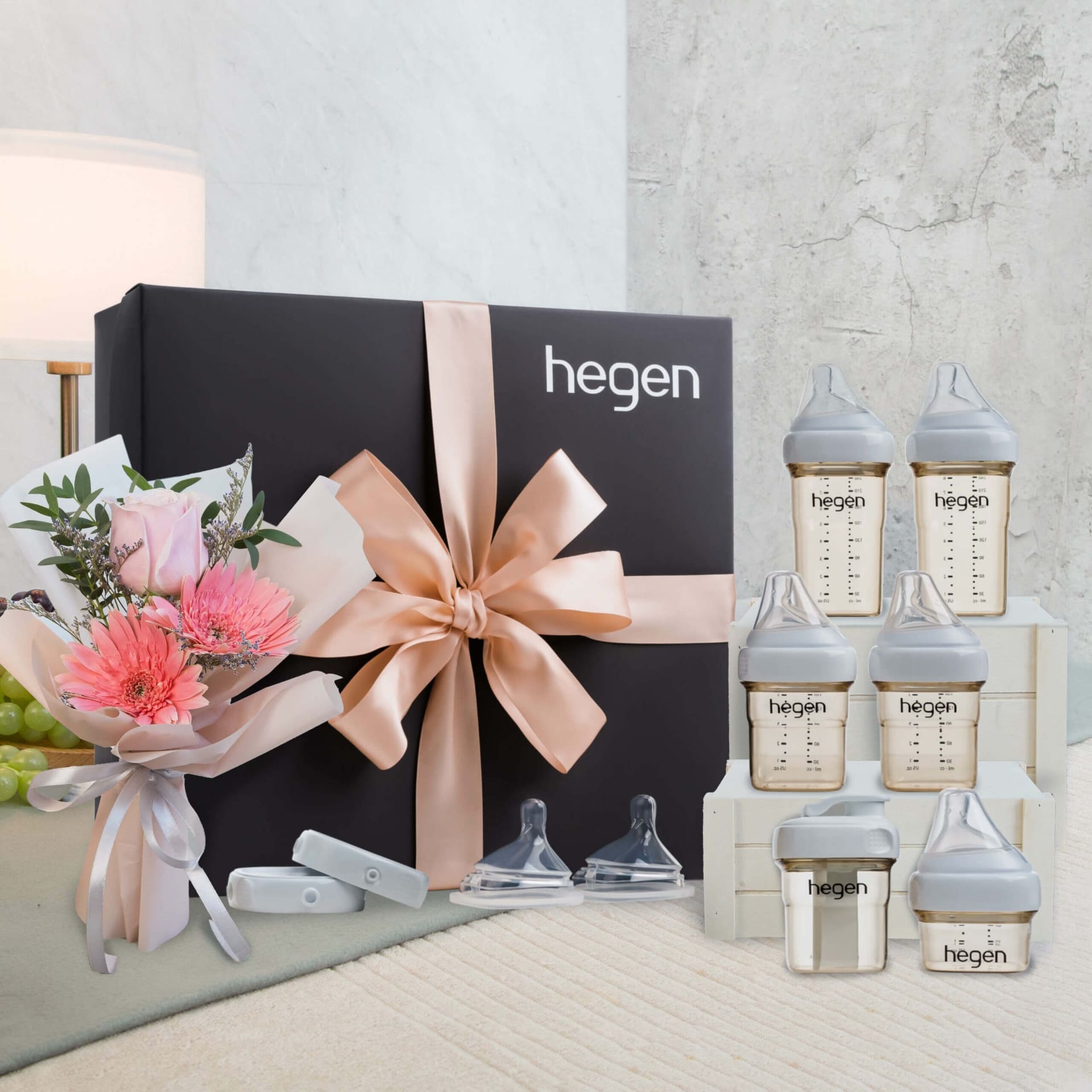
Any new parent will smile when they open this elegantly wrapped gift box. But the benefits of Hegen bottles go far beyond their aesthetic appeal. These cutting-edge "sqround" (square + round) baby bottles feature a venting device to help reduce gas and colic and an off-centered, extended nipple that imitates the breast. The no-screw lid may be twisted to open or pressed to close, and they can be stacked to conserve space. Additionally, because they are constructed of a special material that combines the benefits of glass and plastic, milk may be heated or frozen right in the bottle.
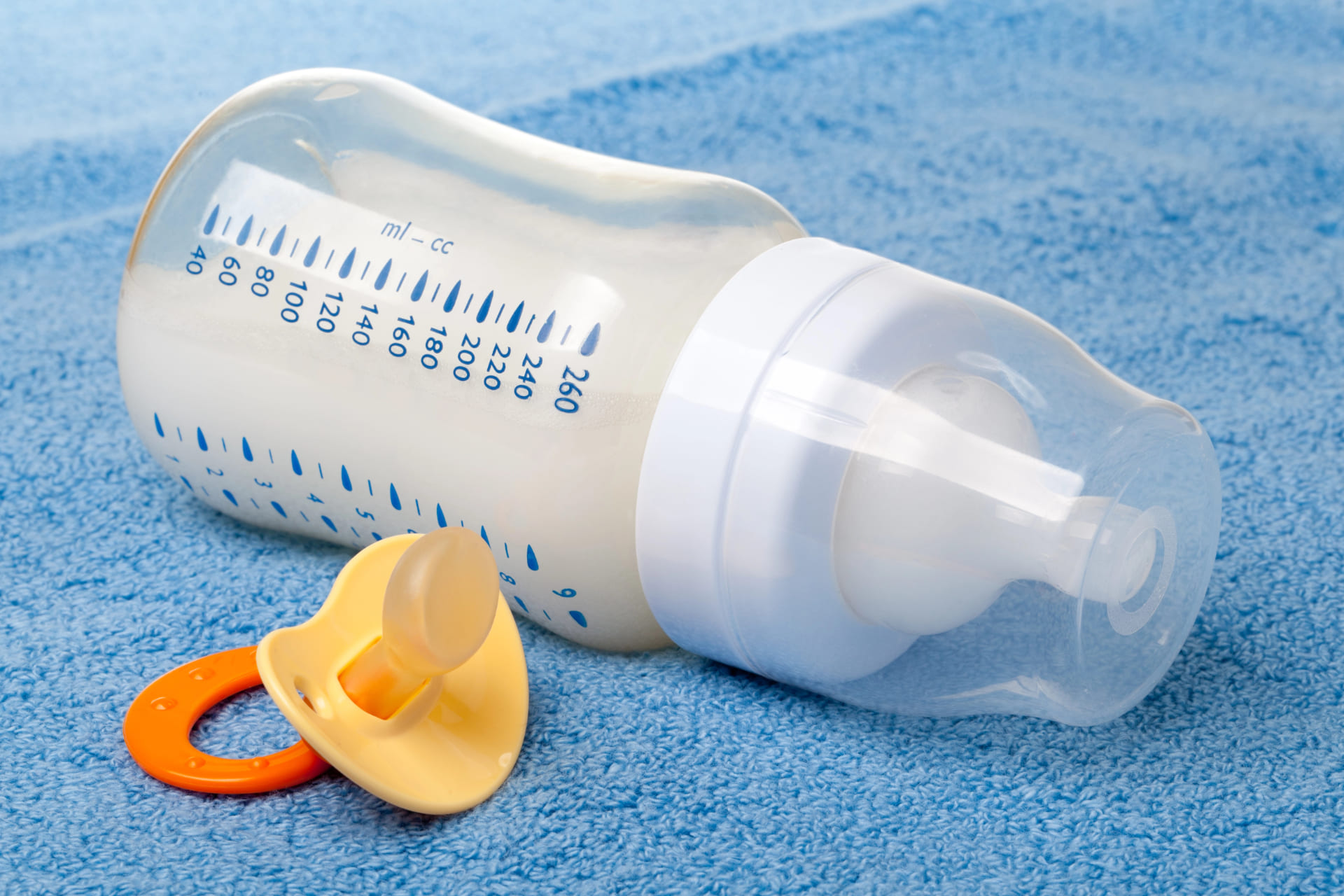
How to choose a baby bottle
There is an enormous range of baby bottles available on the market these days, just like there is for other baby goods. We'll go over all of the characteristics of baby bottles and explain some of the ways that different types could benefit your baby so that you can make an informed decision and choose the ideal one for your child. Finding a setup that works smoothly can also support better time management for moms throughout the day. As you build your feeding routine, you may also be thinking about other essentials for daily care. For bath time, many parents prefer options from our guide to the best bathtubs for newborns, which help keep those early routines safe and comfortable.
Parts of a baby bottle
Bottle
This is where the liquid enters the infant bottle—its key component!
Bottle Sizes
There are two standard sizes for baby bottles:
- Tiny: 4-5 ounces
- Big: 8 to 9 ounces
Young babies are meant to use the tiny size since they drink less in one sitting. When your child is four months old, you should go to eight- or nine-ounce bottles because they will probably start eating more.
It's also OK to begin with larger bottles that are only halfway filled and completely exclude the smaller size bottles. Simply said, the smaller ones fit into a diaper bag or dishwasher more compactly.
Bottle shapes
Standard
Standard infant bottles are the easiest to fill and clean because of their straight sides.
Angled
Angled bottles resemble straight-sided bottles that have been bent into a L shape. They are made to lessen flatulence and spit up while keeping a baby from ingesting too much air. Cleaning this type of bottle may be more difficult.
Wide neck
Wide neck bottles are designed to use with wide nipples. Some suggest that these imitate the experience of breastfeeding and may be the best baby bottles for breastfed babies.
Material
Plastic bottles
The most often used kind of bottle is plastic, which is available in a wide variety of shapes and designs. They may be more difficult to keep clean because they are prone to scratches and odor retention, but they travel well.
Although you may have heard concerns about the possibility of the chemical BPA in plastic baby bottles, rest assured. In 2012, the U.S. Food & Drug Administration banned the use of BPA in baby bottles and sippy cups, so new bottles must be made from BPA free plastic.
Glass bottles
Glass bottles are more easily cleaned and have an endless shelf life—that is, unless they shatter! Additionally, because they are heavier, babies find it more difficult to drink from them on their own. In addition to keeping the glass bottle safe from breaking, a silicone sleeve can improve your baby's grasp.
For environmental reasons, glass is preferred by many parents over plastic.
Silicone bottles
A more recent and difficult to locate option are silicone bottles. In many ways, silicone bottles represent a compromise between plastic and glass; they are easier for newborns to handle, lighter than glass, and more easily cleaned.
Certain silicone bottles burst as your child sips, expelling air and avoiding the entrapment of air bubbles in the infant's stomach.
Nipple
Material
Nipples come in two materials: latex (rubber) and silicone, each with its advantages and disadvantages:
Latex nipple:
Pros:
- Softer and more flexible–may appeal more to breastfed babies;
- less likely to tear
Cons:
- Wears out more quickly;
- retains smells;
- some babies are allergic to latex
Silicone nipple:
Pros:
- Can withstand higher temperatures and be sterilized;
- does not retain smells
Cons:
- Tears more easily;
- harder and more likely to cause nipple confusion
Flow rate
The speed at which liquid passes through your baby's nipple and into their mouth is known as the flow rate.
It's crucial to make sure the flow rate of the bottle nipple you use is suitable for your baby's growth, health, and feeding style.
Your baby will have to work harder to acquire milk or formula if the flow rate is too sluggish, which could cause them to feel frustrated. An excessively rapid flow rate could cause your kid to gasp or choke since they can't keep up. They also spit up and gas as a result of swallowing more air bubbles.
A baby's ideal flow rate is not always correlated with their age. Slow flow nipples may be more beneficial for nursing babies, even those who are older, as the flow rate is more similar to what a lactating mother would experience. More on this under "paced bottle feeding," below.
Nipple shape
There are various forms and varieties of baby bottle nipples.
Typical: tall with a bell-like form:
Orthodontic: broad at the base and tip, narrow in the middle; intended to shield a baby's gums and encourage the growth of teeth
Wide: mimics the contours of a breast and may increase a breastfed baby's attraction to the bottle.
To find out if your baby should use a particular nipple shape, speak with your pediatrician. You can experiment with different forms to determine which your baby prefers, provided there are no health concerns.
Although you can frequently utilize multiple nipple styles with a single bottle, most bottle brands are not interchangeable. If you have a favorite bottle type, you could have fewer options for nipple material and form, and vice versa.
When to replace baby bottle nipples
If a bottle nipple begins to show signs of tearing or cracking, becomes discolored, or seems to be worn out in any other way, you should replace it right away. Make sure your bottle nipples are still in good condition by checking them frequently.
If your baby seems to be taking a long time to eat or is getting agitated, you can also go up to the next flow rate. However, if your infant appears happy, there's no need to change what ain't broke!
Vent system
A vent system, which is a straw-like tube that descends from the bottle's mouth to keep air bubbles out of the milk, is a characteristic of several baby bottle brands. For certain newborns, these bottles may help lessen spit up, gas, and colic.
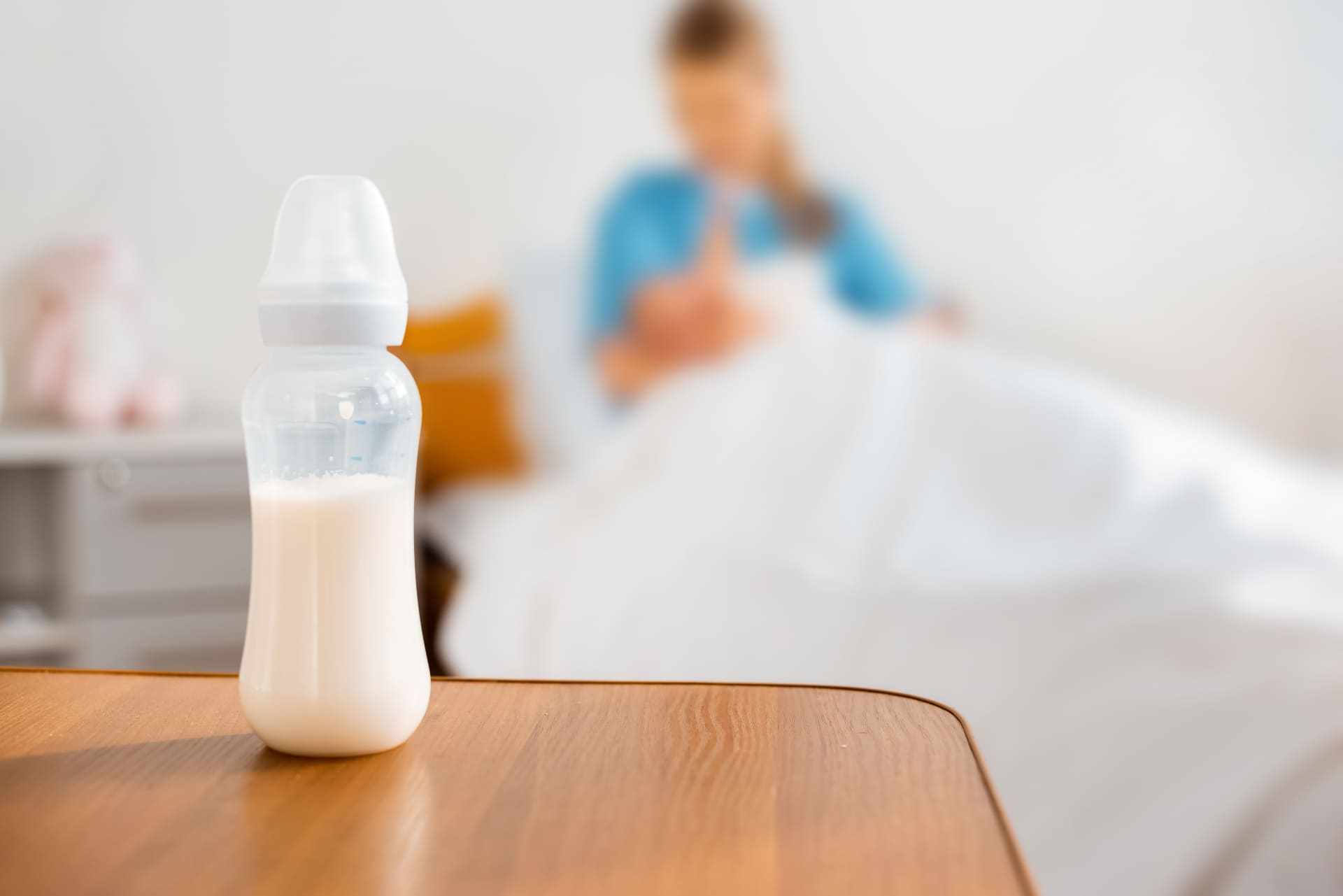
How to use baby bottles
Ages for bottle feeding
Between the ages of 12 and 15 months, babies should typically be weaned off of a bottle. Weaning is necessary even if it can be difficult because extended bottle feeding can lead to tooth decay.
Furthermore, kids who drink a lot of liquids from bottles could not consume enough solid food to fulfill their nutritional requirements. Additionally, they may struggle to learn how to feed themselves, which may further restrict their intake of solid meals.
Beginning bottle feeding
If you are exclusively bottle feeding your child (either formula or pumped milk): They will begin to sip from a bottle on the first day!
This subject gets a little more complicated if you intend to bottle feed in addition to breastfeed.
Weaning your child from a baby bottle
- Your child could be reluctant to wean off of bottles since they are so accustomed to them. When there aren't any other significant changes occurring in your family, it the ideal moment to start.
- Start assisting your infant with sipping water from a cup around six months old so they may become accustomed to the experience.
- After eight to ten months, start replacing one planned bottle feeding with an open cup (with your assistance) or sippy cup. For a week, use a cup for the same feeding.
- Next week, forgo the second feeding in favor of a cup. Continue progressively switching one feeding every few days to one week from bottles to cups.
- You may wish to replace an evening bottle last because it may be a part of your child's reassuring sleep ritual.
- Don't offer bottles again after you've transitioned to a cup for feedings. Be consistent.
Methods for bottle feeding a baby
Paced bottle feeding
One way to use a bottle to simulate nursing is called paced bottle feeding. It enables infants to take pauses when necessary and drink more slowly. A baby can avoid overeating and experience less gas and discomfort if their feeding tempo is controlled.
Whether your baby is bottle-fed only or both breast and bottle-fed, paced feeding might be helpful. It is not required for every baby, though.
The following procedures are included in formal timed feeding:
- When your baby exhibits signs of hunger, like fussiness, rooting, or fist sucking, feed them.
- Use a nipple with a slow flow.
- Make sure your infant is not getting milk in their mouth by holding them semi-upright and gently tilting back.
- Place the bottle nipple across your baby's lips and let them latch on like they would while breastfeeding when they root or open their mouth.
- To better allow your infant to regulate the flow, hold the bottle almost horizontally.
- After letting them suck for 20 to 30 seconds, give them a brief respite.
- Until your infant indicates that they are satisfied, keep doing this. For instance, kids might stop sucking after the pause or look away from the bottle.
To find out if timed feeding is appropriate for your child, speak with your pediatrician. They might advise attempting a less formal rendition.
Don't be afraid to try paced feeding if you decide to! Although it might seem difficult at first, you'll get used to it quickly. Your baby will also start to pace themselves as they become used to this eating schedule!
Self-feeding with a baby bottle
Your baby can benefit greatly from being able to hold their own bottle.
Your baby may be able to perform this at a variety of ages. As early as six months old, some babies can grasp a bottle. It takes most newborns eight to nine months to gain the strength and fine motor skills necessary to hold the bottle and put it in their mouth.
Remember that even if a baby is physically capable of holding their own bottle, some newborns will never show interest in doing so.
Never put a bottle in your baby's crib at night, even if they feed themselves during the day. As babies grow more coordinated and start exploring their environment, caregivers often begin thinking about first-layer essentials beyond feeding — including finding the best newborn shoes for those early wiggly steps and outings.
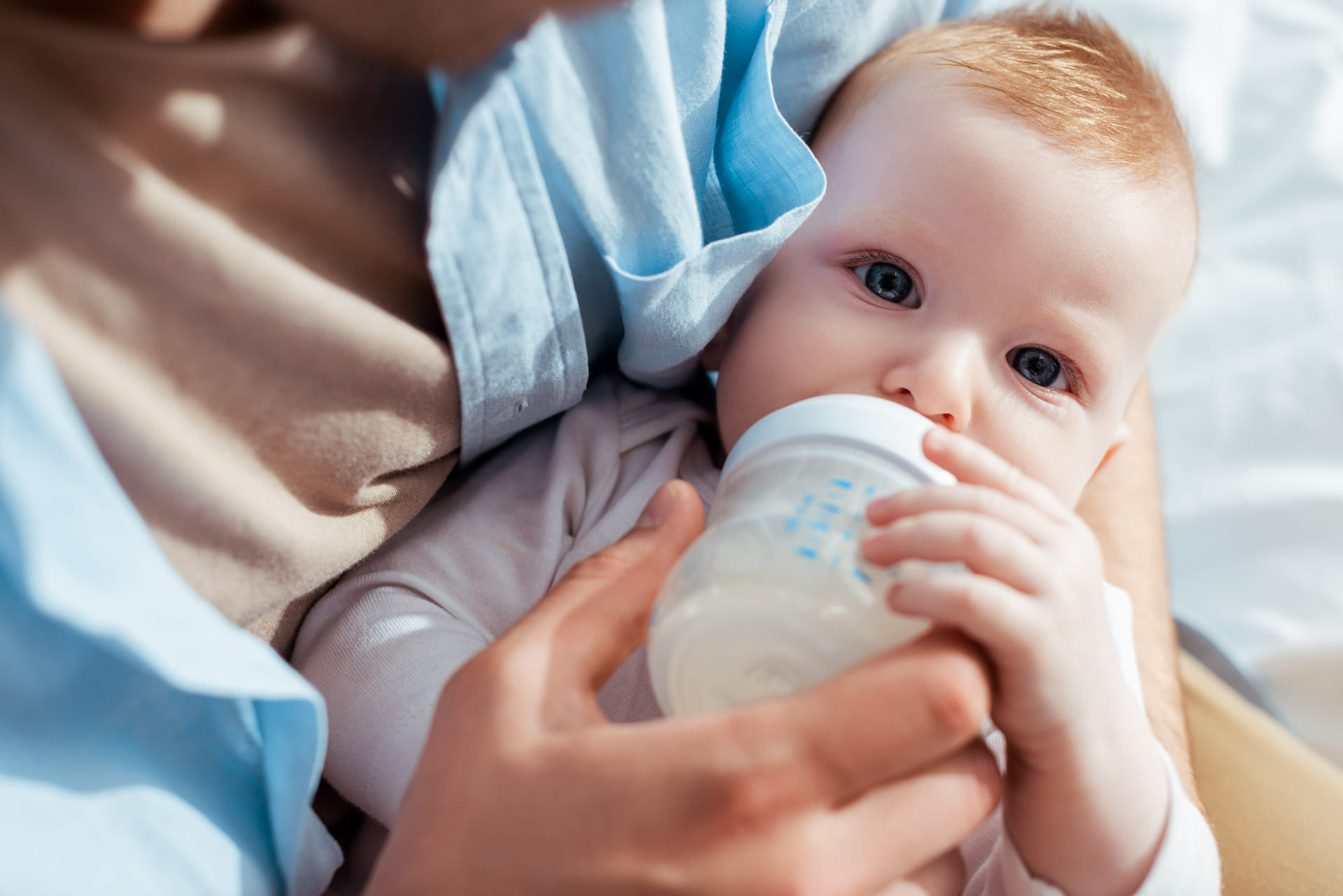
FAQs
How many baby bottles do I need?
The quantity of infant bottles you should purchase depends on a number of factors, including:
- Is your infant receiving all of its nutrition from a bottle? In that case, you probably want eight or ten bottles. You may get away with purchasing a lot less if you are also nursing.
- How frequently are you willing and able to clean bottles? If you clean unclean bottles more frequently, you can purchase fewer. Conversely, they will require replacement since they will wear out sooner.
- For example, are you filling bottles in advance to give to a caregiver? In this case, more will be required.
What are the best baby bottles?
If you have any doubts regarding the best baby bottles for your child's specific needs—for example, if they spit up a lot or you're worried about combining bottle and breastfeeding—ask your pediatrician. The ideal infant bottles for these circumstances can be recommended by your pediatrician.
Ultimately, the ideal baby bottle is the one that your child enjoys using the most! To find the ideal bottles for your kid, you might need to try a few various brands and variations.
How long can you keep using a baby bottle? Do they expire?
Infant bottles do not "expire" in the same manner as other items. But they can need to be changed somewhat frequently, depending on the kind you use.
The life of plastic bottles is comparatively short. Tiny scratches grow in the plastic of bottles as a result of frequent dishwasher runs, being jammed into diaper bags, and other wear and tear. This is why the bottles start to appear discolored and hazy. These crevices let bacteria to enter, making it more difficult to thoroughly clean and secure the bottle for your child.
In addition to warping the plastic and making it more difficult to completely seal the collar, high heat from washing and sterilizing can also create leaks.
Replace a plastic bottle immediately if you observe any of these symptoms. Plastic infant bottles typically have a four-to-six-month shelf life.
Because glass infant bottles are less likely to scratch, they usually last much longer. Even so, you should inspect them for chips and scratches before using them every time, and replace any that are broken. Glass bottles have a long shelf life if they are maintained properly. Staying on top of these small routines also helps reduce the kind of everyday overwhelm described in our guide on managing stress in your 30s.
As was previously said, nipples need to be changed every few months.
Should you replace bottles with each baby?
Bottles that are not cracked, stained, twisted, or otherwise harmed are usually safe to use with a newborn. To safeguard your newborn's developing immune system, you should replace the nipples and sterilize the bottles before using them once more.
You should replace the older bottle if there's a possibility it was made before 2012, when the FDA started requiring BPA-free bottles.
Are bottles microwave safe?
Any brand of bottle should never be microwaved since this might produce "hot spots" that could burn your baby's lips.
Can bottles be washed in the dishwasher?
Verify the directions provided by the manufacturer on the bottle's package. Glass bottles are generally safe to use in the dishwasher. The top rack of the dishwasher is suitable for washing most plastic bottles.
If you are worried about your pregnancy, try Soula. Soul is AI assistant for Female Wellbeing.
Soula have been specifically designed for women, taking their unique challenges on their journey towards success and joy.
Soula is here 24/7 to provide women with emotional and informational support during the most challenging periods of their lives, aiming to prevent anxiety, burnout, and depression through neuroscience techniques and conversational AI.














